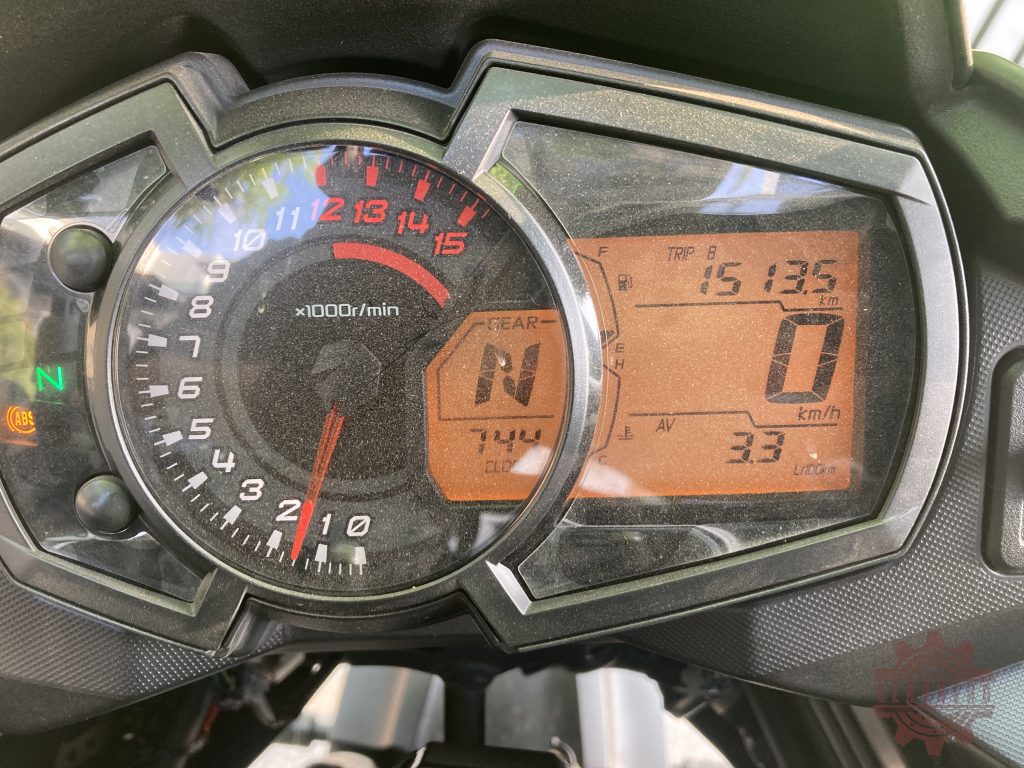Quick stats:
- Date: November 2022
- Duration: 4 days
- Distance: 1.513,5 km
A friend of mine mentioned A Pa Chai, Vietnam’s westernmost village. The mere fact that he mentioned “westernmost” was enough reason to pique my interest (yes, I have my quirks). I pulled out my phone, opened Google maps and found an itinerary with a myriad of mountain passes and winding roads. 17 hours of riding isn’t too bad, I thought to myself. And, of course, I could do it in less than 14 hours. So, the only things left to do were blocking a four days and getting the bike ready.
Day 1: Haiphong – Hanoi (95 km)
I left Haiphong in the evening after a long working day. The first leg of the trip was a short one: a 75-minute ride from Haiphong to Hanoi. Since motorcycles aren’t allowed on expressways (the QL5B in this case), I had no other choice than to take the old highway no. 5. Unfortunately, the opening of the new expressway in 2017 did nothing to reduce truck traffic on the old highway due to weight checks and higher toll fees. This two-lane highway is a 95-km stretch from Haiphong to Hanoi, via Hai Duong and countless of other smaller villages. It’s pretty straight, yet not without risk. The asphalt layer is currently being refurbished, so expect road works everywhere.
I took off at 7:00PM, so it was pitch black already. Coincidentally, this is also the time when most container trucks start their trip from Haiphong port to Hanoi. However, the ride was uneventful and I was able to blast through traffic as usual.
Day 2: Hanoi – Hoa Binh – Son La (305 km)
The trip got more interesting once I got to Hanoi, as I wouldn’t be riding on any highways anymore. I started the day at 10AM, a bit later than expected. I didn’t think much of it, as I would still be able to reach Dien Bien Phu by nightfall… if it weren’t for the flat rear tire. So, there I was right at the exit of Hanoi when I realized my rear tire went flat. I knew this is going to cost me precious time, as my Versys is equipped with spoke wheels and tubed tires. This means that the tire needs to come off and the tube needs to be fixed.
I called a friend for help. Unsurprisingly, my options were (1) have the bike transported by truck to a shop and have the tire repaired there, or (2) go for a roadside repair. Given my time constraints, I opted for the roadside repair and sat my ass down while waiting for the guy to show up. After a 30-minute wait, the guy showed up, driving a repair shop on wheels, a trusty old Honda Wave.


To my surprise, he didn’t even bother removing the wheel. He spent most of his time carefully removing the tire from the wheel, making sure not to damage my beloved black-anodized spoke wheel. In less than 30 minutes, the repair was done and the guy was applying the correct air pressure to the tire (a first in Vietnam). It was nearly lunch time and I was getting hungry. I turned around and there was my blessing in disguise: a bun cha place. Bun cha is always better in Hanoi.
At this point, I was in dire need to get out of the hustle and bustle of Hanoi and hit the open road. The AH13 to Hoa Binh was the quickest way out. The AH13 starts in Hanoi and stretches all the way to Dien Bien Phu. The first 40 kilometers are arguably even more dangerous than highway no. 5 as there is only one lane in each direction, making overtaking much trickier. As I was leaving Hanoi further behind, traffic got less dense and I was finally able to make good progress.
I had left Hanoi 4 hours later than initially planned and it was impossible to get back on schedule. So, by the time I reached Son La, I had been riding in the dark for a few hours and fatigue started to kick in. I decided to call it a day and checked into a hotel for some well-deserved shut eye.
Day 2: Son La – Muong Nhe (350 km)
After a good night’s sleep, it was time to get back on the open road. Since the hotel didn’t serve breakfast, I skipped it, packed the bike and hit the road. The plan for day 2 was to reach A Pa Chai. It’s a 10-hour / 400-km ride. But as you’ll read in a minute, I would yet again fail to reach my destination as planned.
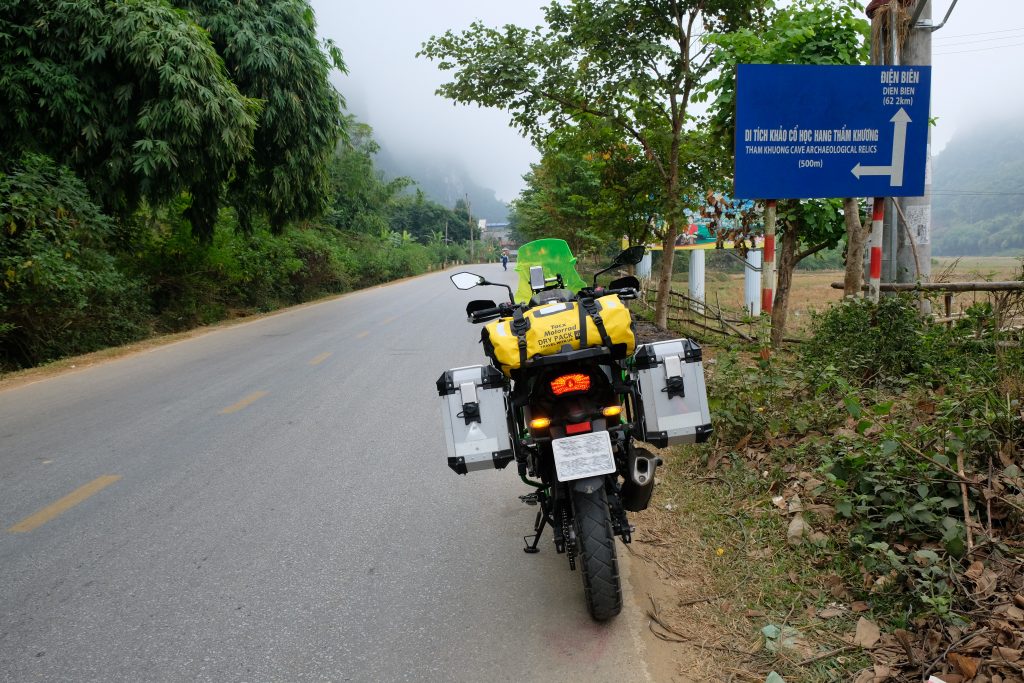

Now, when you’re traveling from Son La to Muong Nhe or A Pa Chai, the easiest way is to stay on the AH13. Granted, it’s not much of an adventure, but the quality of the pavement is good and you can make good progress. Or, you could do like I did and ignore my goddamn advice. Indeed, I found a shortcut cutting straight from the AH13 to the QL12, without passing through Dien Bien Phu. Turns out this “shortcut” was indeed shorter in distance… but not in time. This road would end up being much slower, especially when it gradually ran out of tarmac…
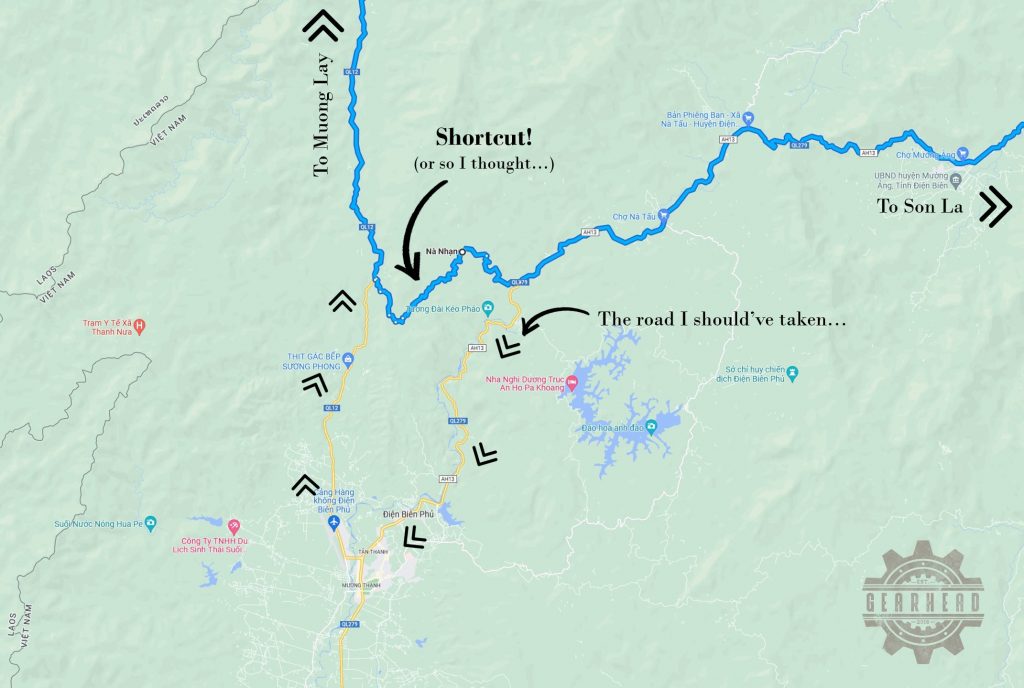


For the most part, this road was under construction. Most stretches were leveled and compacted, but still unpaved. Luckily, the weather had been dry the week before and the surface was still in good condition.
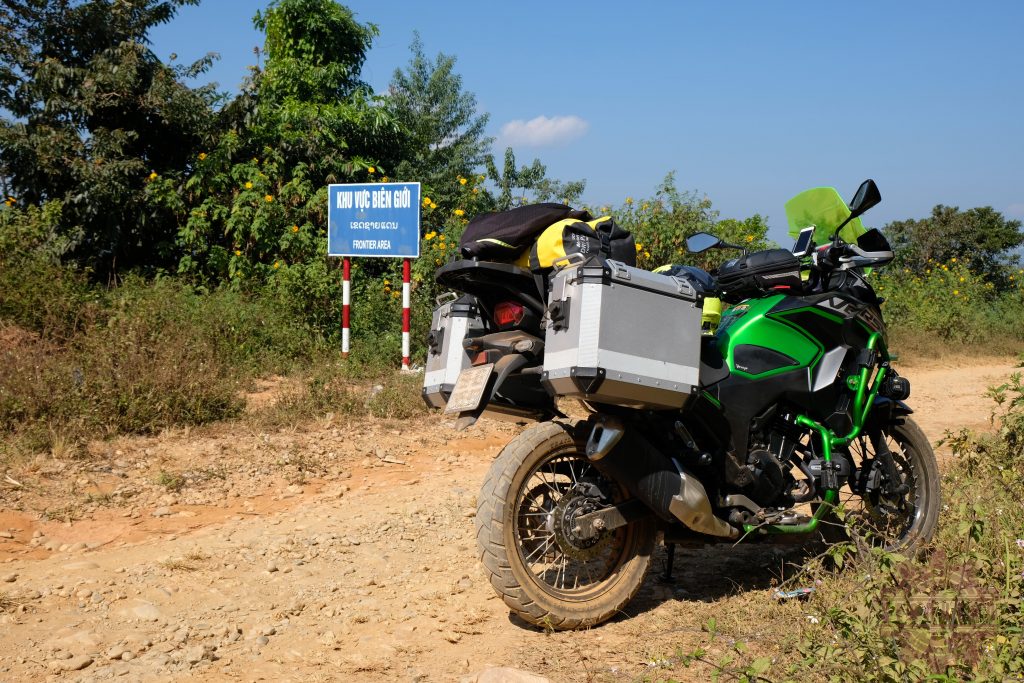

After having lost a couple of hours, I finally got to the QL12. It was another 40 km until I had to turn left onto the TL131. From that point, it would be another 5 hours riding to A Pa Chai. The TL131 is a wonderful road. It’s in relatively good condition, offers great scenery and more turns than your heart can desire. You’d be hard pressed to maintain an average of more than 80km/h, so it suited my little Versys perfectly.
However, daylight was getting scarce and I knew I wasn’t going to make it all the way to A Pa Chai. And by the time I got to Muong Nhe, the TL131 got the better of me. The sun had already set and I was going to have to spend the night here. As I enter the township, the narrow TL131 suddenly turns into a 2 x 2 lane boulevard. The town itself wasn’t much more than this seemingly overbuilt arterial road and some smaller side roads. The local economy also didn’t seem to be thriving. A quick drive-through only revealed a supermarket, a handful of guesthouses and a few restaurants.
I noticed that something was off when the first two guesthouses refused to provide me with accommodation. My Vietnamese being what it is, I didn’t really understand what the issue was, but it did seem like a big deal… Finally, the third guesthouse did accept me. Or so I thought, until the local police showed up…
I won’t go into too much detail here. In a nutshell, I was requested to leave the area immediately and return to wherever I came from. As for the reason, I had to settle for a very vague “foreigners aren’t allowed in this area”. And I was also told that the 3-country border point was off limits, even when you show up with the special permit delivered by the Dien Bien Phu police.
I wasn’t thrilled to hear this, as it meant that (1) I would have to give up on A Pa Chai and (2) I would have to ride back in the middle of the night. Luckily, the owner of the guesthouse was able to persuade the officers to let me spend the night and head back in the early morning. Once the officers had left, the owner asked me in broken English what my plan was for tomorrow. Not having taken the situation very seriously, I told him that I would be sticking to my plan to go to A Pa Chai. He gave me a very serious look and warned me not to do that. Police would be on the look-out for me, as my presence had already been signaled to the police in the neighboring villages. Going to A Pa Chai would not be without consequences…
Note:
There is a lot of misinformation out there. On this website, I had read the following:
To be able to visit A Pa Chai, you need a referral from the local residence or your work to ask for permission from Dien Bien Border Command. Then, Dien Bien Border Guard Command will give you a referral to the Frontier Station and the local government where you go (they are compulsory procedures).
I actually did contact the local authorities in Haiphong and asked them to request for permission from Dien Bien Border Command. However, they told me that they were not familiar with this procedure and they had never had such a request. And that was that…
Day 3: Muong Nhe – Muong Lay – Lai Chau – Sapa – Lao Cai – Pho Rang (400 km)
After a good night’s sleep, I opened my eyes around 5:30AM. Opening the curtains of my ground-floor bedroom revealed a thick curtain of fog and a smidge of misty rain. I slowly started packing the bike and checked out of my room. As I was ready to go, I remembered the words of the guesthouse owner and I accepted defeat: I had decided I would not go to A Pa Chai.
But before I left Muong Nhe, I took a quick picture in front of its central market. This was the westernmost point I would reach in Vietnam.
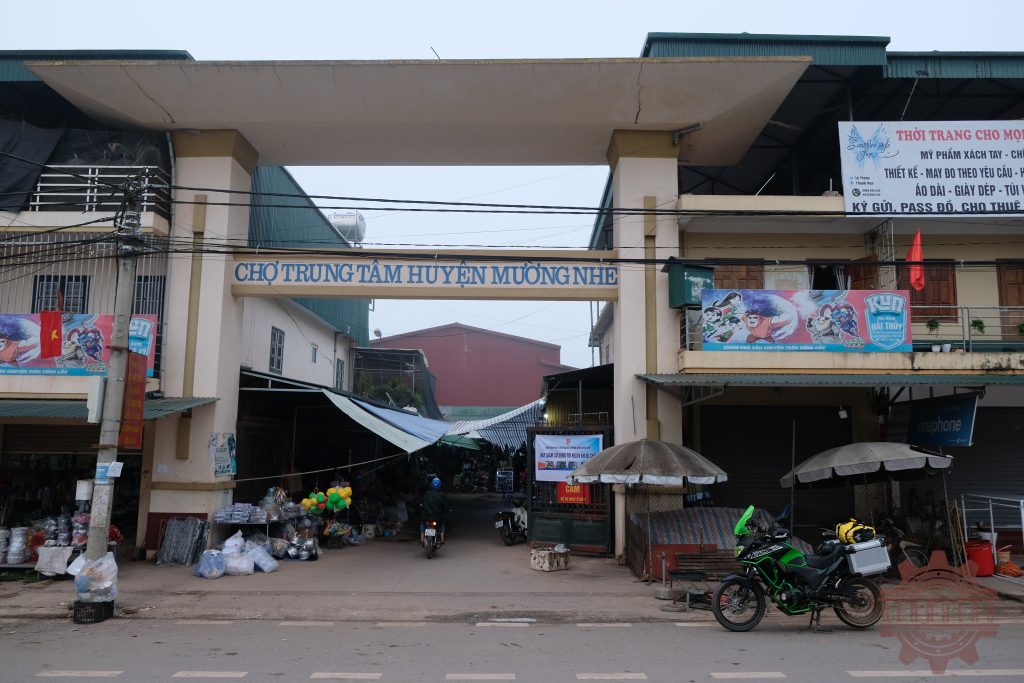
I decided to head to Muong Lay. Hence, the first leg of the trip was the 5-hour ride back on the TL131, and then head north on the QL12 to Muong Lay. The day started in fog and mist.

To my surprise, the QL12 between Muong Lay and Lai Chau is one of the most beautiful roads I have ever ridden. Not only it is in excellent condition, the scenery is also breathtaking. The lanes are wide and visibility is great as most of the turns are long sweepers. Now, I love my little Versys to death, but I was really missing the punch of my Ninja 1000 to power through these turns and elevation changes. Last but not least, most of this 100-km stretch was completely devoid of traffic. Truly heaven on Earth.
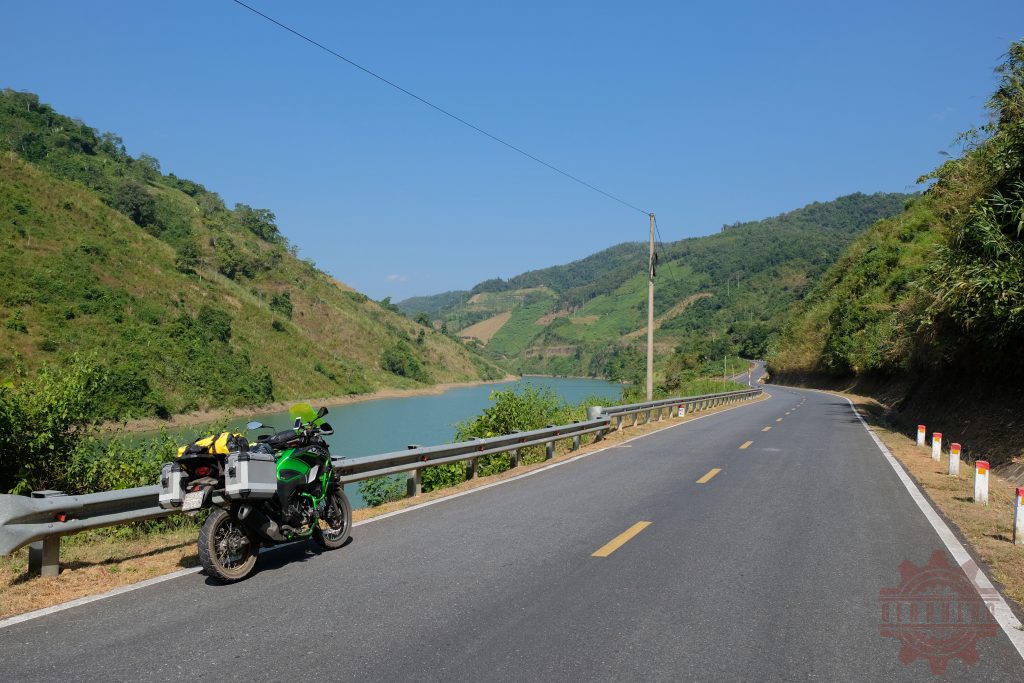
I made the obligatory tourist stops along the way, like the Sapa Glass Bridge on the O Quy Ho pass.
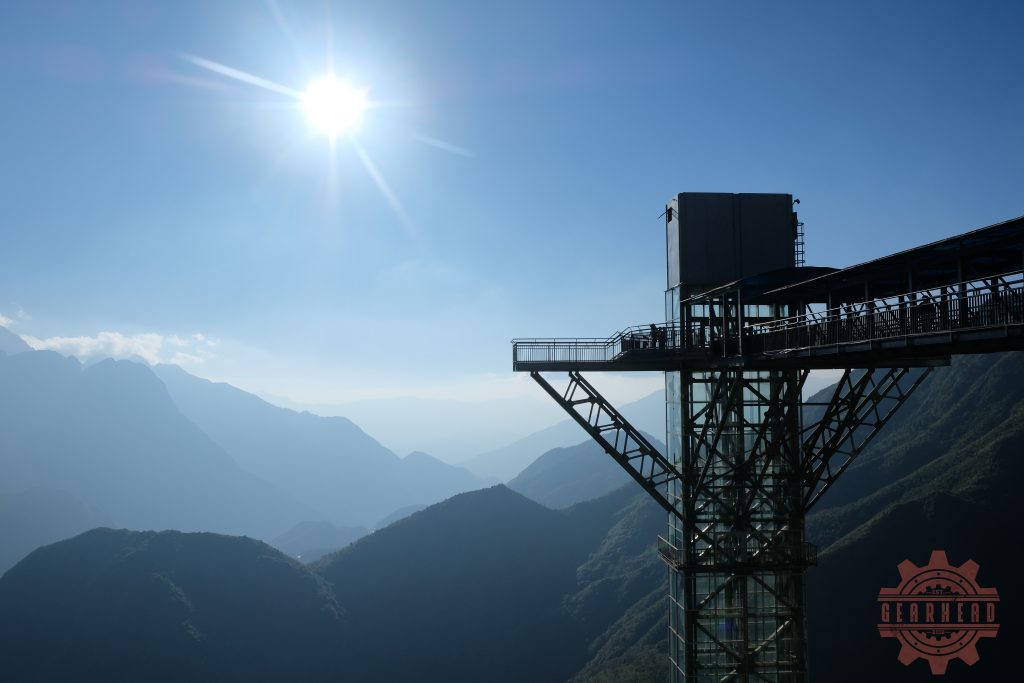

However, I didn’t bother to stop in Sa Pa. To me, Sa Pa lost most of its charm when the Sun group, and other investors, turned this little town into an amusement park of some sorts. The clock struck 6:00PM as I drove into Lao Cai. My stomach was growling. So, I settled for some Mì xào bò (fried noodles with beef) before hitting the road again.
From here on out, it’s straight to Yen Bai on the AH14. While this road looks relatively straight on a map, it’s full of turns. And to make things worse, there’s loads of traffic. At this point, I had been riding for nearly 12 hours and I started to feel some fatigue. Time to find a place to sleep. The AH14 crosses countless small villages, but I finally stopped in Pho Rang to look for a nhà nghỉ.
There were several nhà nghỉ’s in my line of sight. I pulled up to the nearest one and asked for a room. The old lady at the counter pulled out a piece of paper on which she wrote “200.000 VND”. That’s fine, I thought. She guided me to a rundown but clean room. At least there was an AC unit in the room! But the remote was nowhere to be found… So, I asked the old lady. Long story short, I had to pay an additional 50k VND to get the remote for the AC. Ah, the joys of cheap travel!
Day 4: Pho Rang – Haiphong (375 km)
After having paid two hundred AND FIFTY thousand dong, I packed my bike and headed straight for Haiphong. It was another 375 km to get home. No time, nor desire, to do any sightseeing during this final leg of the trip. When I finally got home the trip odometer displayed 1.513,5 km. Not too shabby…
